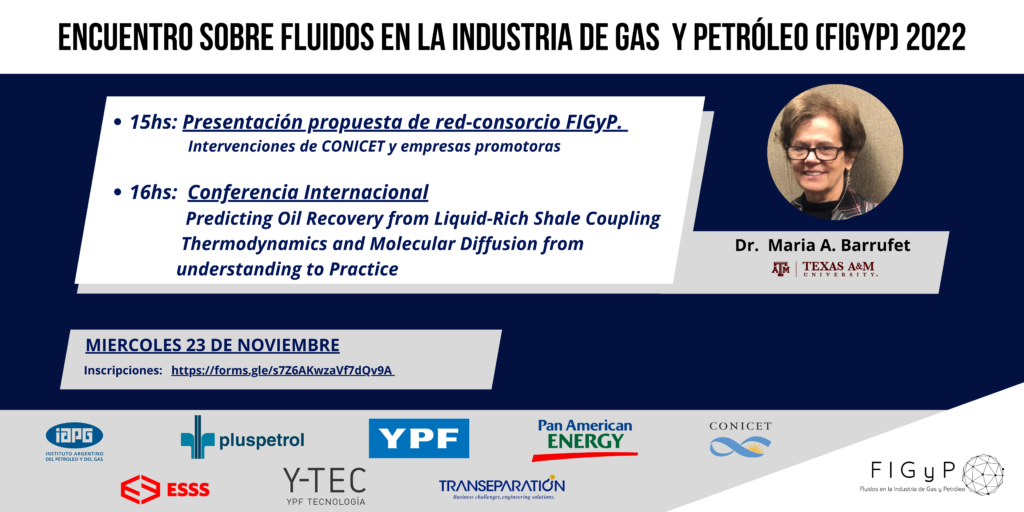Dr. Maria A. Barrufet – TEXAS A&M UNIVERSITY

Recent developments in technology have transformed unconventional low-permeability shales to reliable energy sources. Unconventional resources are more abundant than conventional ones in terms of hydrocarbon capacity; however, to increase the extremely low hydrocarbon recoveries from liquid-rich shale remains a global challenge to the energy sector community including academics, industry, and governmental organizations.
Based or published pore size distributions for shale formations, pores smaller than 40 nm hold up 40 to 50% of the hydrocarbons. The same reservoir models used for conventional reservoirs cannot explain the fundamental mechanisms taking place when producing unconventional resources in terms of fluid flow and thermodynamic properties. Diffusion, which is negligible in conventional reservoirs with pore sizes 4 to 5 orders of magnitude larger than the fluid molecules, becomes the dominant flow mechanism in tight shale formations. Rock-fluid interactions including capillary pressure become more significant and fluids are said to be confined.
Mass transfer, whether induced (i.e., gas-assisted) or from depletion, in liquid-rich shales requires a solid understanding of the thermodynamic and transport behavior of fluids in confined media. The flow behavior in confinement can significantly impact the recoveries, whether production takes place under depletion or using some assisted recovery scheme.
History matching can always be achieved, often at the expense of using wrong or heavily correlated parameters that lead to non-unique and/or unreliable forecasting. Our goal is to use physics based models that can be readily applied and integrated into the mathematical mainframe of commercial simulators.
There have been several experimental and numeric efforts to investigate various gas injection/cycling scenarios to improve the oil recovery of shale. With this presentation I provide a brief overview of current approaches to describe confinement along with their advantages, limitations, uncertainties, and the reasoning that led us (my group) to choose a particular approach.
We incorporated confinement in our thermodynamic model and validated the observed phenomena of bubble point pressure depression, and higher gas-oil-ratios for condensate systems. We have also proposed a model dominated by diffusion flow to model oil production from a modified huff-and-puff gas-assisted recovery and validated this approach from lab experiments within our group.
I will walk you through our research stages, modeling simplifications, experimental results, disappointments, accomplishments, current standing and future goals.
